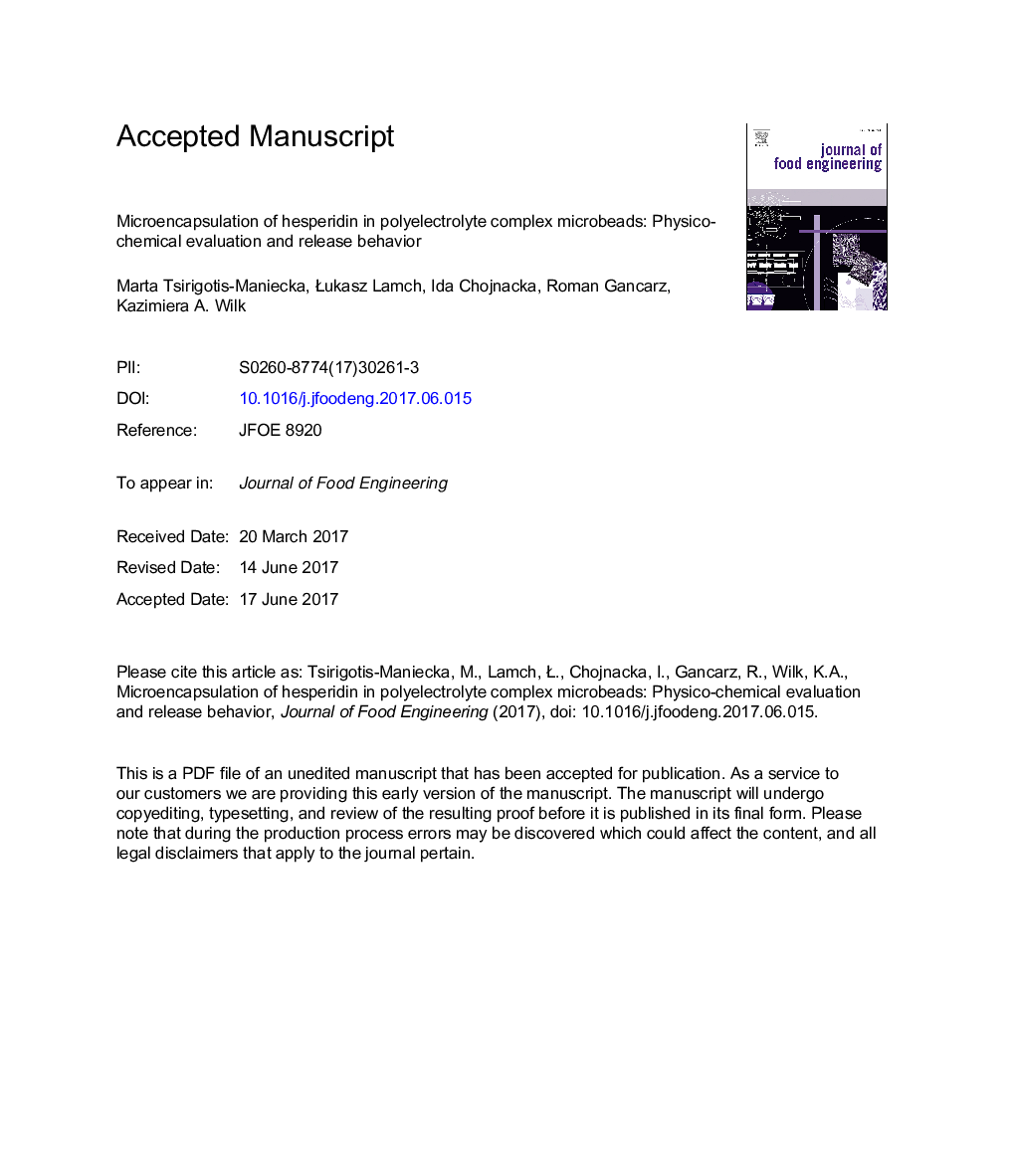| Article ID | Journal | Published Year | Pages | File Type |
|---|---|---|---|---|
| 4908839 | Journal of Food Engineering | 2017 | 49 Pages |
Abstract
The aim of the study was to develop and characterize alginate microparticles coated with polyelectrolytes and containing hesperidin - a natural bioflavonoid of great nutritional potential. Hesperidin's solubility is moderate, thus it was essential to develop a stable carrier which enables its targeted delivery to the intestine. The cargo was entrapped in the alginate (ALG) hydrogel matrix by means of the extrusion/external gelation technique. To achieve customized functional properties of microbeads, biopolymers (chitosan, gelatin) and synthetic polymers (PAH/PSS pair) were deposited on the ALG cores. The fabricated microparticles successfully encapsulated hesperidin (>87%) and were compared in terms of moisture content, surface morphology and particle size (SEM). FTIR spectroscopy confirmed the formation of polyelectrolyte complexes and the microsystems were further characterized with DSC. The swelling and release behaviors were studied in detail, including in vitro release experiments. The results obtained indicate that the fabricated microcapsules revealed the desired pH-dependent release ability.
Related Topics
Physical Sciences and Engineering
Chemical Engineering
Chemical Engineering (General)
Authors
Marta Tsirigotis-Maniecka, Åukasz Lamch, Ida Chojnacka, Roman Gancarz, Kazimiera A. Wilk,
